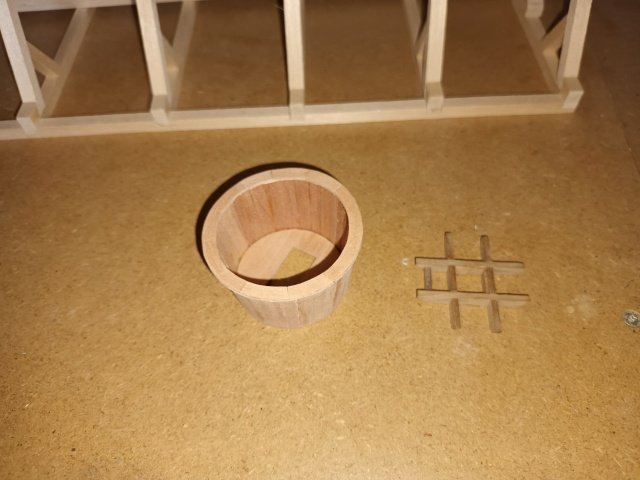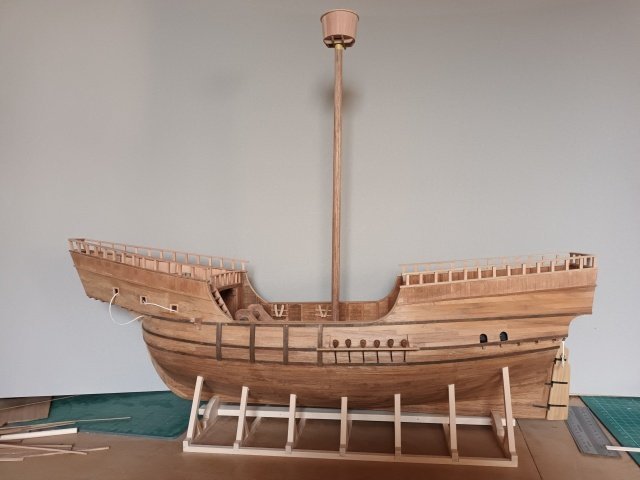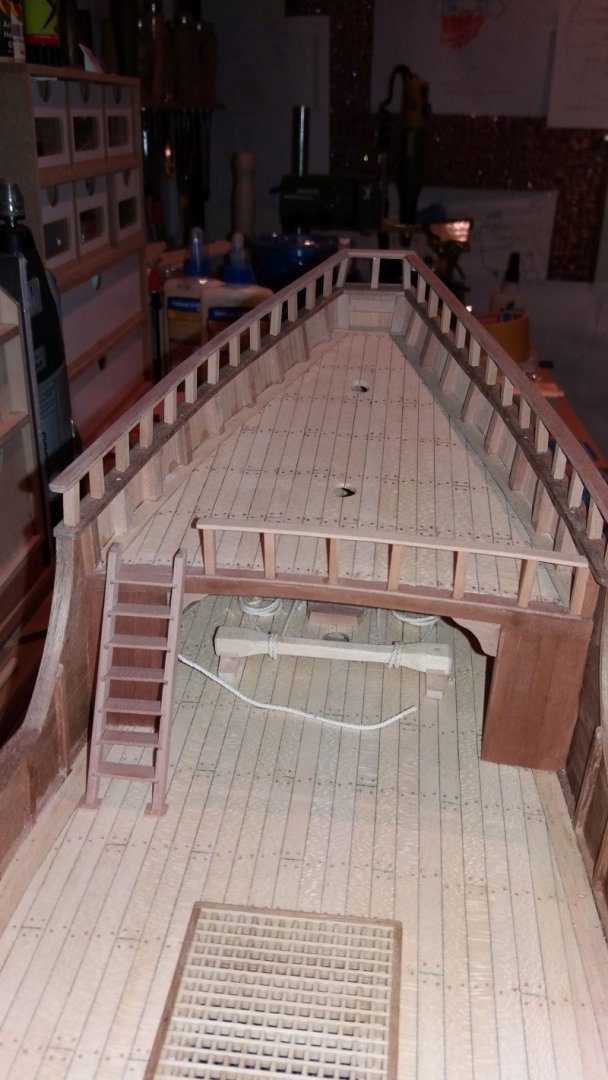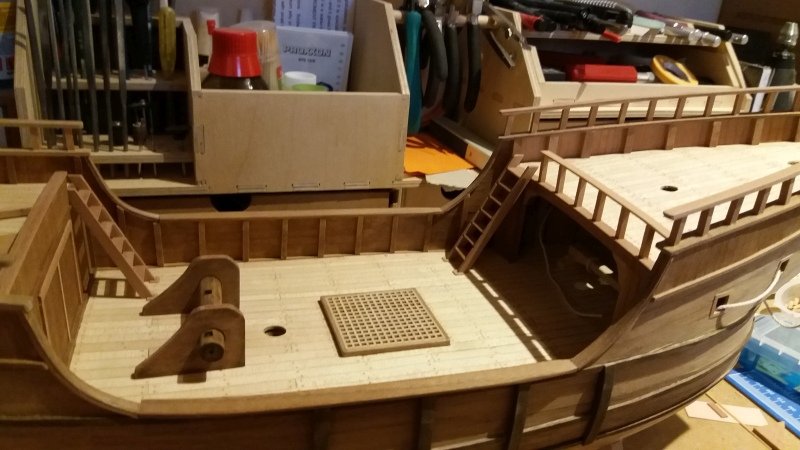-
Posts
78 -
Joined
About goetzi73
- Birthday August 30
Recent Profile Visitors
-
 goetzi73 reacted to a post in a topic:
Chaconia by Javelin - 1/100 - RADIO - LPG Tanker
goetzi73 reacted to a post in a topic:
Chaconia by Javelin - 1/100 - RADIO - LPG Tanker
-
 goetzi73 reacted to a post in a topic:
Chris Watton and Vanguard Models news and updates Volume 2
goetzi73 reacted to a post in a topic:
Chris Watton and Vanguard Models news and updates Volume 2
-
 goetzi73 reacted to a post in a topic:
ELBE 1 1948 by Mirabell61 - scale 1:87 - Lightship
goetzi73 reacted to a post in a topic:
ELBE 1 1948 by Mirabell61 - scale 1:87 - Lightship
-
 goetzi73 reacted to a post in a topic:
Fifie by woodartist - Amati - 1/30 scale
goetzi73 reacted to a post in a topic:
Fifie by woodartist - Amati - 1/30 scale
-
 goetzi73 reacted to a post in a topic:
Chris Watton and Vanguard Models news and updates Volume 2
goetzi73 reacted to a post in a topic:
Chris Watton and Vanguard Models news and updates Volume 2
-
 Canute reacted to a post in a topic:
Chris Watton and Vanguard Models news and updates Volume 2
Canute reacted to a post in a topic:
Chris Watton and Vanguard Models news and updates Volume 2
-
 thibaultron reacted to a post in a topic:
Chris Watton and Vanguard Models news and updates Volume 2
thibaultron reacted to a post in a topic:
Chris Watton and Vanguard Models news and updates Volume 2
-
 mtaylor reacted to a post in a topic:
Chris Watton and Vanguard Models news and updates Volume 2
mtaylor reacted to a post in a topic:
Chris Watton and Vanguard Models news and updates Volume 2
-
 Oboship reacted to a post in a topic:
Chris Watton and Vanguard Models news and updates Volume 2
Oboship reacted to a post in a topic:
Chris Watton and Vanguard Models news and updates Volume 2
-
 markjay reacted to a post in a topic:
Chris Watton and Vanguard Models news and updates Volume 2
markjay reacted to a post in a topic:
Chris Watton and Vanguard Models news and updates Volume 2
-
 chris watton reacted to a post in a topic:
Chris Watton and Vanguard Models news and updates Volume 2
chris watton reacted to a post in a topic:
Chris Watton and Vanguard Models news and updates Volume 2
-
 goetzi73 reacted to a post in a topic:
Reale De France by fmodajr - FINISHED - Corel - Scale 1:60
goetzi73 reacted to a post in a topic:
Reale De France by fmodajr - FINISHED - Corel - Scale 1:60
-
 goetzi73 reacted to a post in a topic:
Reale De France by fmodajr - FINISHED - Corel - Scale 1:60
goetzi73 reacted to a post in a topic:
Reale De France by fmodajr - FINISHED - Corel - Scale 1:60
-
 Archi reacted to a post in a topic:
Hanseatic Ship c. 1500 by goetzi73 - 1:50 - first scratch build
Archi reacted to a post in a topic:
Hanseatic Ship c. 1500 by goetzi73 - 1:50 - first scratch build
-
 Archi reacted to a post in a topic:
Hanseatic Ship c. 1500 by goetzi73 - 1:50 - first scratch build
Archi reacted to a post in a topic:
Hanseatic Ship c. 1500 by goetzi73 - 1:50 - first scratch build
-
 Ainars reacted to a post in a topic:
Hanseatic Ship c. 1500 by goetzi73 - 1:50 - first scratch build
Ainars reacted to a post in a topic:
Hanseatic Ship c. 1500 by goetzi73 - 1:50 - first scratch build
-
 Ondras71 reacted to a post in a topic:
Hanseatic Ship c. 1500 by goetzi73 - 1:50 - first scratch build
Ondras71 reacted to a post in a topic:
Hanseatic Ship c. 1500 by goetzi73 - 1:50 - first scratch build
-
Nice work. The carvings are outstanding!
- 204 replies
-
- kitbashing
- Woodcarving
-
(and 4 more)
Tagged with:
-
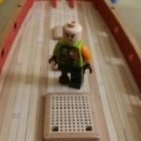
Painting White/Pot Metal.
goetzi73 replied to JohnB40's topic in Painting, finishing and weathering products and techniques
Using Tamiya's Primer is a good way to start. For Painting a figure head using oil paints are the most common way, as mentionend in the previous posts. However my experience is, that a layer of the correct Acrylic Model Paint after the Tamiya Primer will avoid nasty surprises, as white spirit may dissolve parts of the primer. For painting realistic wood effects: Have a look at all that plastic modeller forums. -
Hello Steven, for further Information: https://en.wikipedia.org/wiki/Coat_of_arms_of_Bremen and the official Website of the City of Bremen: https://landesportal.bremen.de/bremer-landessymbole (in german, maybe google translator will help) Götz
- 175 replies
-
- hanse kogge
- shipyard
-
(and 1 more)
Tagged with:
-
The Colors look fantastic. One question about your "special mixture": Once dried, does it leave any stains when touched, or do you apply a clear coat afterwards?
- 76 replies
-
- Fifie
- Victory Models
-
(and 1 more)
Tagged with:
-
Just an addition: Personally I'am using Iwasaki files for cabinet-making and ship modelling. These files are superior to normal cabinet files. The teeth cut aggressively, but leave a very fine and smooth surface. You may have a look here: https://www.highlandwoodworking.com/iwasaki-carving-files.aspx Götz
-

Dust extractor - compact and quiet?
goetzi73 replied to Rik Thistle's topic in Modeling tools and Workshop Equipment
Hello Richard, one important thing to point out: The Festool machinery is for professional use. Therefore it has to match certain criteria, at least here in Germany. Dust is classified in categories L, M, H. For wood shops using a M-class extractor would be recommended. In our modelling ship yards a L-class machine should be sufficient. Nevertheless wood dust can be carcinognic (e.g. beech). Personally I'am using a festool CTM Midi in my workshop. It works fine with my large Power Tools, I use for cabinet-Making and all other stuff around my house, and it works fine with my proxxon tools I use for modelling. Yes, these are expensive, Makitas extractors are less expensive, but you get a nice machine that's robust and easy to handle. It's your choice, but I would recommend using at least an extractor certified as L-class. Götz -
What a nice model. It was really enjoyable following your build. When you've finished your rebuild - your next ship model will be...? Perhaps something australian? Götz
-

Translation help needed - Renaissance German
goetzi73 replied to Louie da fly's topic in Nautical/Naval History
Hello Louie, I'am a native speaker (german), too. But in this case it's difficult for me. Nevertheless from the old low-german dialect, the phrase "sie haffen stund" could mean "they where waiting", oder "they were standing (watching, etx.)". The phrase "so al von den turken skafft" could mean "bought from the turkish", "got from the turkish", "it was al brought / bought by the turkish". Looking at the drawing, I'am not sure if this word really writes "skafft". The first letter could also be someting else than "s". Maybe we have someone here with proper knowledge in medeavial european languages. Regards, Götz -
Thanks Steven. @ chuck: I'am glad there are quite a few experts on this forum. Unfortunately I'am a chemist not a historian. One more tip - in "middle low german" the word "kraweel" was commonly used, especially in the period of the hanseatic league. "Krewaal" was used also, but it is less common. Another point: The phrase "hanseatic cog" (Hansekogge) is often used in common language as an generic term for all types of ships of this era. Götz
About us
Modelshipworld - Advancing Ship Modeling through Research
SSL Secured
Your security is important for us so this Website is SSL-Secured
NRG Mailing Address
Nautical Research Guild
237 South Lincoln Street
Westmont IL, 60559-1917
Model Ship World ® and the MSW logo are Registered Trademarks, and belong to the Nautical Research Guild (United States Patent and Trademark Office: No. 6,929,264 & No. 6,929,274, registered Dec. 20, 2022)
Helpful Links
About the NRG
If you enjoy building ship models that are historically accurate as well as beautiful, then The Nautical Research Guild (NRG) is just right for you.
The Guild is a non-profit educational organization whose mission is to “Advance Ship Modeling Through Research”. We provide support to our members in their efforts to raise the quality of their model ships.
The Nautical Research Guild has published our world-renowned quarterly magazine, The Nautical Research Journal, since 1955. The pages of the Journal are full of articles by accomplished ship modelers who show you how they create those exquisite details on their models, and by maritime historians who show you the correct details to build. The Journal is available in both print and digital editions. Go to the NRG web site (www.thenrg.org) to download a complimentary digital copy of the Journal. The NRG also publishes plan sets, books and compilations of back issues of the Journal and the former Ships in Scale and Model Ship Builder magazines.





